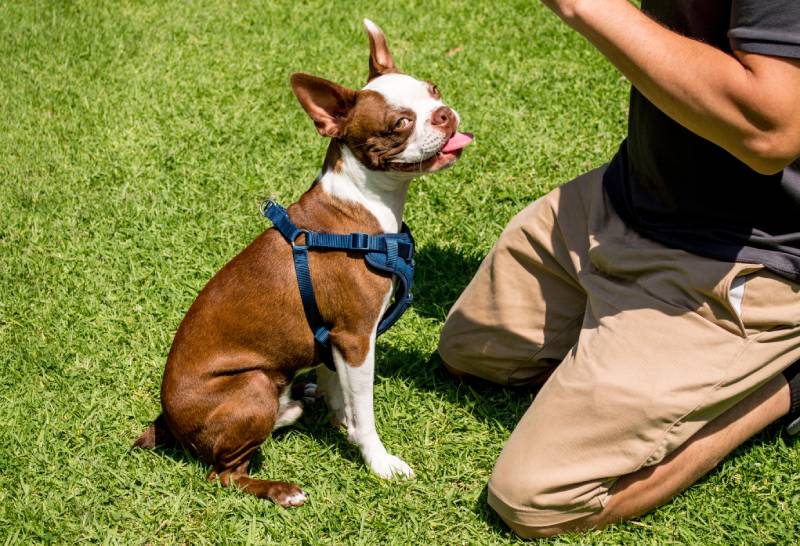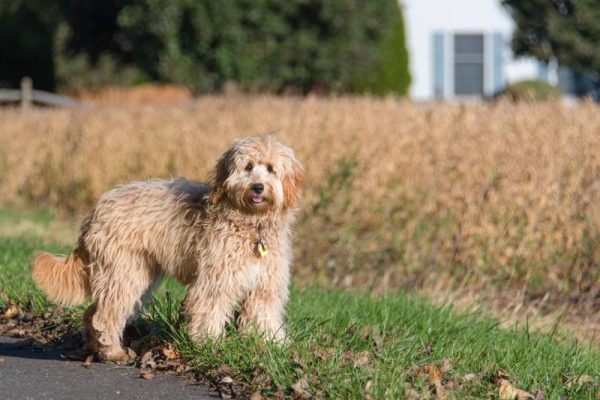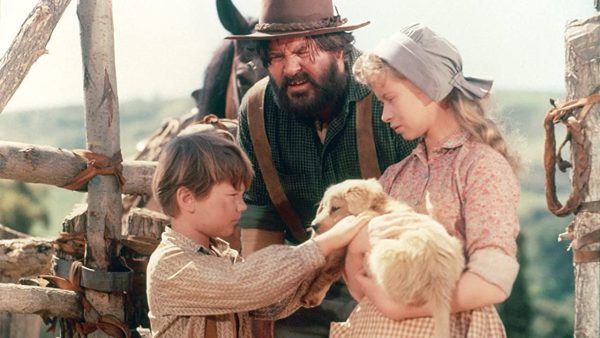Boston Terriers are fun, lively, and amiable little dogs that can make great pets. They can also be quite easygoing and get along with people, other dogs, and other animals. Boston Terriers are intelligent and they can respond well to being given tasks, but they are also known for being a little stubborn, and this stubbornness can make training more challenging.
With that said, no matter how stubborn a Boston Terrier is, it is still possible to train them, and by following the 13 tips and tricks below, you can have a well-behaved and well-adjusted Boston Terrier as part of your family.

The 13 Tips on How to Train a Boston Terrier
1. Start Young
A Boston Terrier of any age can be trained, to some extent, but the younger the dog is when you start training, the easier the process will be and the better the training results. You don’t always have control over when you can start training, but if you are getting your dog from a breeder and it is arriving as a puppy, you should start as soon as the dog has had a chance to settle in and get used to its surroundings.

2. Socialize
Socialization is an important part of a young dog’s development. Introduce your young Boston Terrier to new people, situations, and animals. This will help ensure that your pup can deal with new situations in the future, and because they are used to being faced with new challenges, it will make elements of training easier, too.
3. Get into a Routine
Bostons, like most dogs, are creatures of habit, and they love having a routine. They will expect their meals at the same time of day, and they will want to be walked at around the same time. It is a good idea to set some kind of routine as early as possible. A routine with mealtimes and walk times will help with potty training, and if you hold training sessions at roughly the same time, your pup will know it’s time to get serious and get down to business.
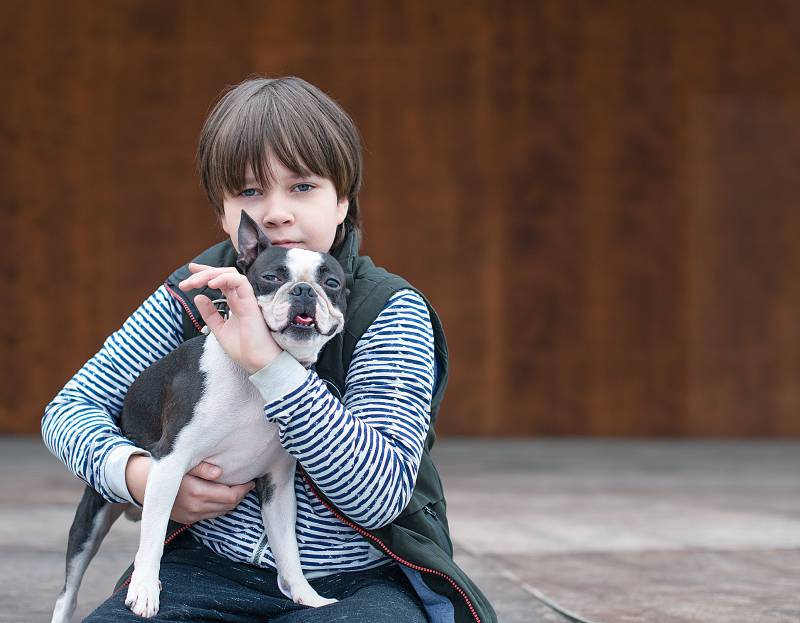
4. Be Patient
To some dogs, training comes naturally. They seem to instinctively know what you want and are happy to listen to your commands whenever you give them. This isn’t true for all dogs, however. Whether your Boston Terrier is a quick learner and a capable student, or it takes longer to pick up even some of the most basic requirements, you need to be patient. If you lose patience, your dog will sense it and become anxious. Training an anxious dog is a lot more difficult.
5. Praise and Reward
Positive reinforcement works well with Boston Terriers. This means praising and rewarding them when they perform a desired action. Bostons are known to be food-oriented which makes training easier, especially positive reinforcement. Positive reinforcement also means that rather than using commands like “stop” to stop unwanted behavior, you should look to distract or replace the unwanted behavior with a desirable behavior so you can use sit rather than down when your dog jumps up, and then praise and reward them when they do sit.
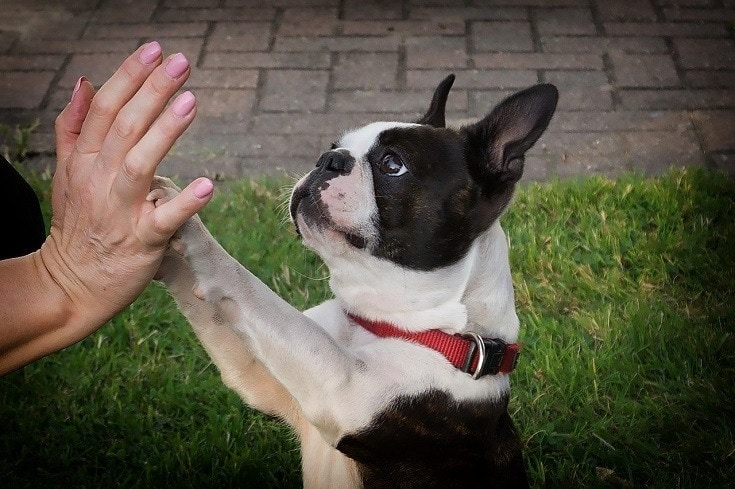
6. Be Consistent
You need to be consistent with your training efforts. This means sticking to your schedule and being consistent with what you want. If you’re training your Boston not to jump up, this should be the rule you always follow. Don’t let them jump up at certain people just because they’re OK with it.
7. Use Consistent Commands
You also need to use consistent commands, so you should use the same words every time. Make sure the rest of the family knows what words you are training so they can use the same commands. Try to make sure the words you use aren’t too similar to one another, or this can cause confusion too.
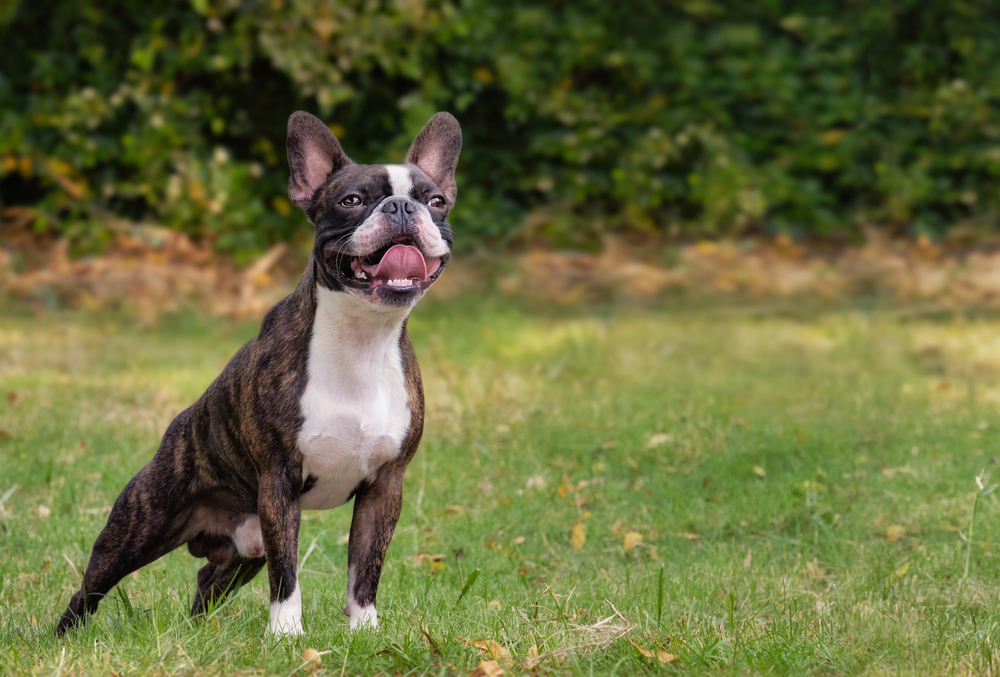
8. Short Sessions
With the Boston Terrier being known to be a little stubborn, you need to keep training sessions short. The longer the session goes on, the more likely the dog will lose attention or want to move on to something else. Start with 5-minute sessions and gradually increase this to 15 minutes at a time. Of course, some training is ongoing and doesn’t fit into training sessions. Making your dog sit when you approach a road, for example, is something you should always be training.
9. Make it Fun
Boston Terriers might be a little stubborn, but they are also fun-loving and lively little dogs. They enjoy playing, and if you can turn a training session into a fun game, this will keep their attention longer and will help you set both up for success. Training doesn’t have to be a game but if you keep it fun and lively, and offer treats and rewards, it will feel like a game.
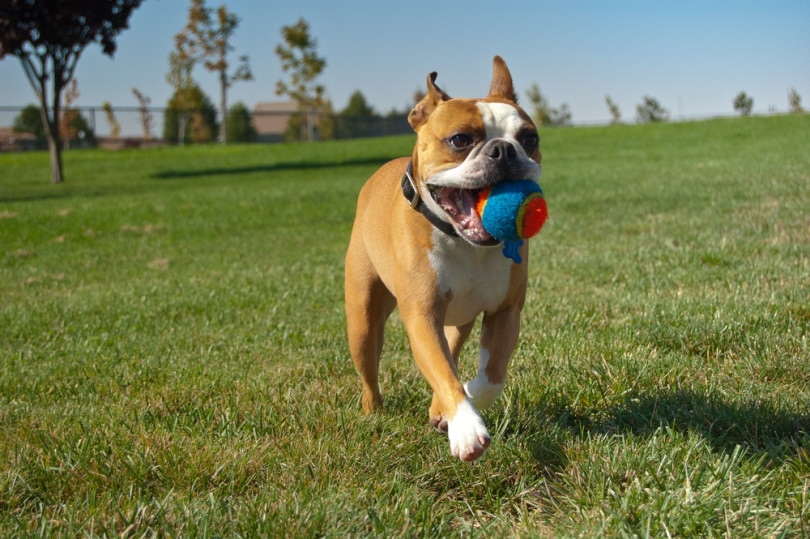
10. Start with the Basics
Before you move on to more complicated training, you need to get the basics down. This means training some of the most basic commands like sit and stay and working on name recall. Most problems can be resolved and situations improved if your dog reacts to these commands every time.
11. Practice, Practice, Practice
Training should start when your puppy is young and will likely continue for the rest of the dog’s life. You should also make training a daily occurrence. There may be occasional days when you are unable to train, but you should make sure that you keep up with training as often as possible, and keep practicing to ensure that your pup gets the hang of the commands you want to teach.
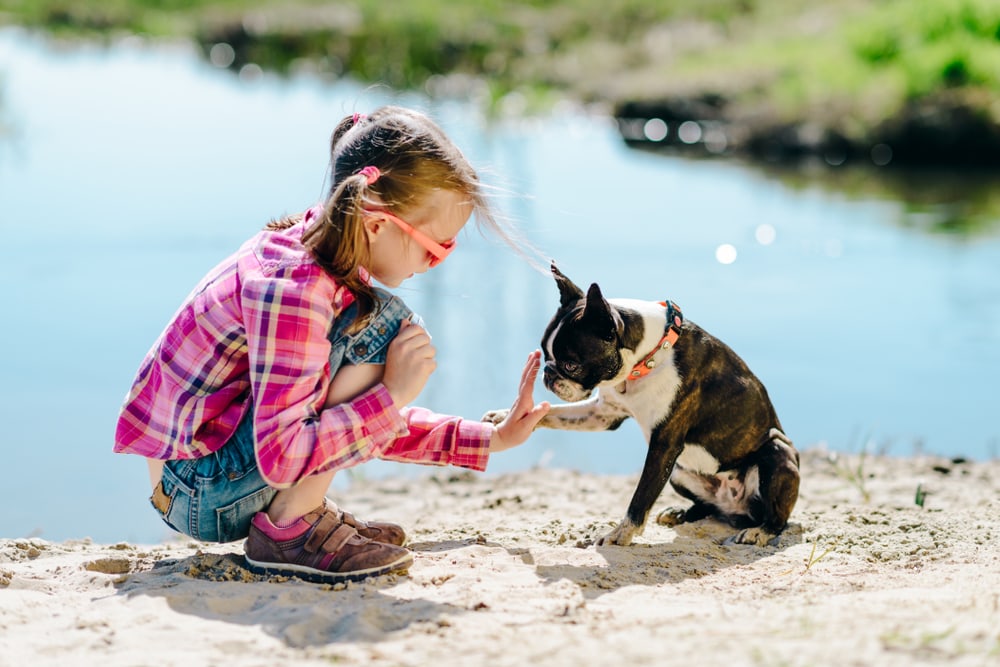
12. Be Realistic
Setting unrealistic goals means that you are effectively setting your dog and yourself up to fail. You can’t expect to have a perfectly trained dog within a few days. It can take weeks to learn a few basic commands with some dogs, and it can take months before your dog understands its role within the family and the routines you want to encourage.
13. Get Help
Whether you’re finding it difficult to train your Boston Terrier, you want some general pointers to help improve the process, or you want a safe space where you can teach the basics and socialize your dog, you can get professional training help. Puppy classes are a good way for your dog to master the basics and for you to pick up some of the skills you need while also offering socialization with other dogs and people.
If your dog has bad habits that you’re really struggling to counter, a behaviorist or vet consult can offer one-on-one sessions and give some invaluable tips.
If you need to speak with a vet but can't get to one, head over to PangoVet. It's our online service where you can talk to a vet online and get the advice you need for your pet — all at an affordable price!


Summary
The Boston Terrier is a friendly, amiable, fun-loving dog breed. It is intelligent and usually takes quite well to training, but it can also be a stubborn breed which can make training difficult. Start training at a young age and make sure your pup is well-socialized. Teach basic commands before moving on to more complicated training, and be consistent with your timing, training, and the commands that you use.
Other Interesting Dog Reads:
- White Pug: Facts, Origin & History (with Pictures)
- Best Shampoos for White Dogs – Reviews & Top Picks
Featured Image Credit: LI Cook, Shutterstock
